Dear friends,
If you wonder why we have done so many reviews of Sennhseiser gear and headphones and never of the legendary HD 600 or HD 650, you have to know that we wonder the same.
All of those who followed the wonderful journey into the world of headphones inevitably bumped into and listened to the Sennheiser HD 600 or HD 650 at least once. They quickly became so popular and widespread that we considered a dedicated review unnecessary.
Sennheiser recently announced the true successor of the HD 6xx line, the new HD660S.
As a sign of repentance, we bring out the fresh review of this new model, and at the end of this article we will compare it with the predecessors HD 600 and HD650, which we’ve been using for many years now.
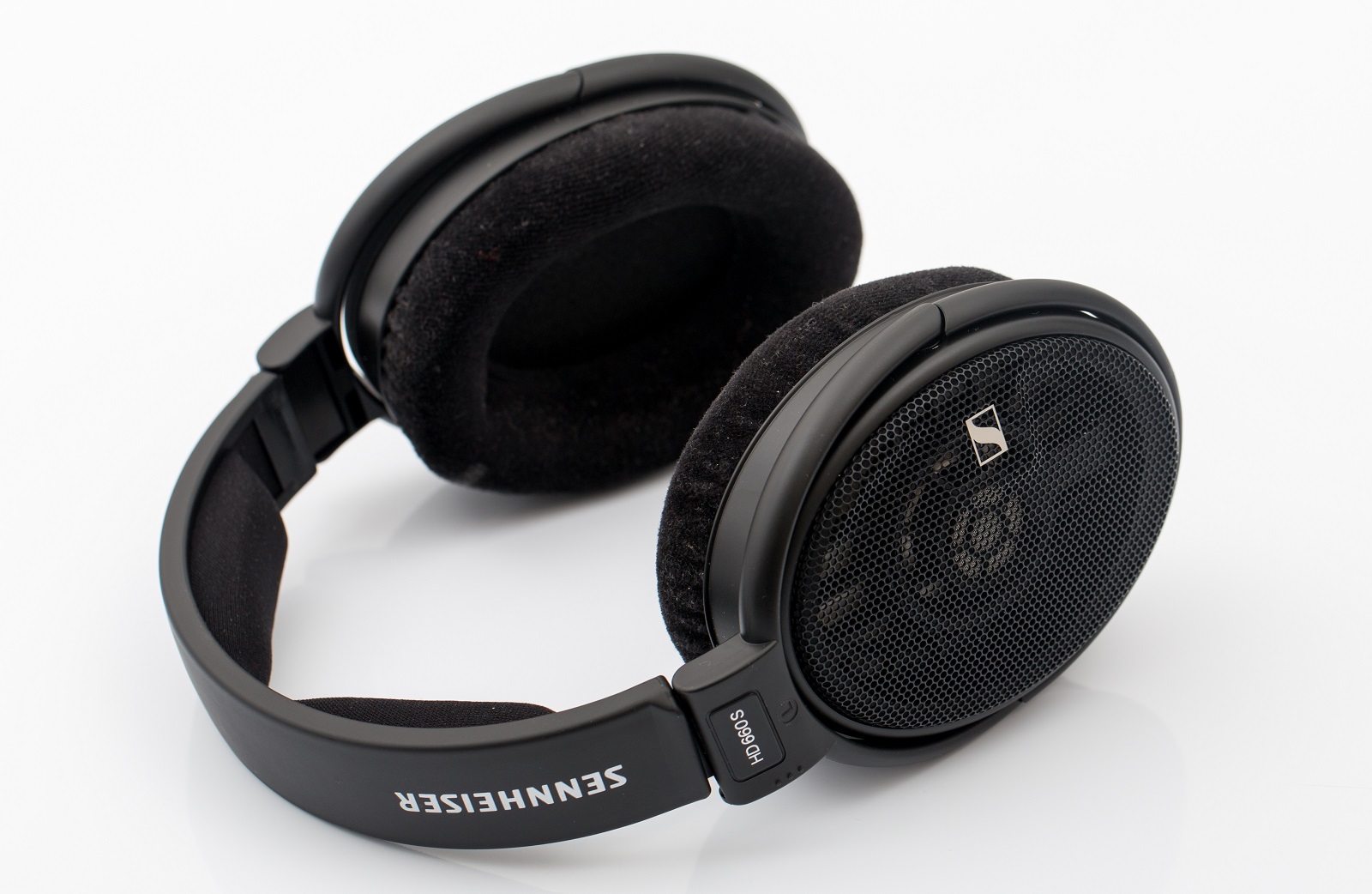 Built and appearance
Built and appearance
The design is very similar to the HD 6xx line. They’re built almost completely from hard matte black plastic that won’t be a fingerprint magnet anymore. The exterior grill is still metal, with an embossed Sennheiser logo on one side.
The earpads are a bit deeper and softer, which allows for longer listening sessions.
Fresh out of the box, the clamping force of the headphones is a bit stronger, but most probably in time it will loosen at the level of the HD 600/HD 650.
What more can I say? We have the same built and design that we are familiar with for more than 26 years.
But why would you want to change something that stood the test of time with ease?
Besides the standard 3m long cable terminated in a 6.35mm jack, there is a 6.35mm to 3.5mm adapter, and an additional balanced cable terminated in a 4.4mm Pentaconn jack which is being used more and more by the leading industry. We’ve already seen this balanced connection on the new Sennheiser HDV 820 and on many of Sony’s gear and headphones. I hope others will adopt this new standard soon.
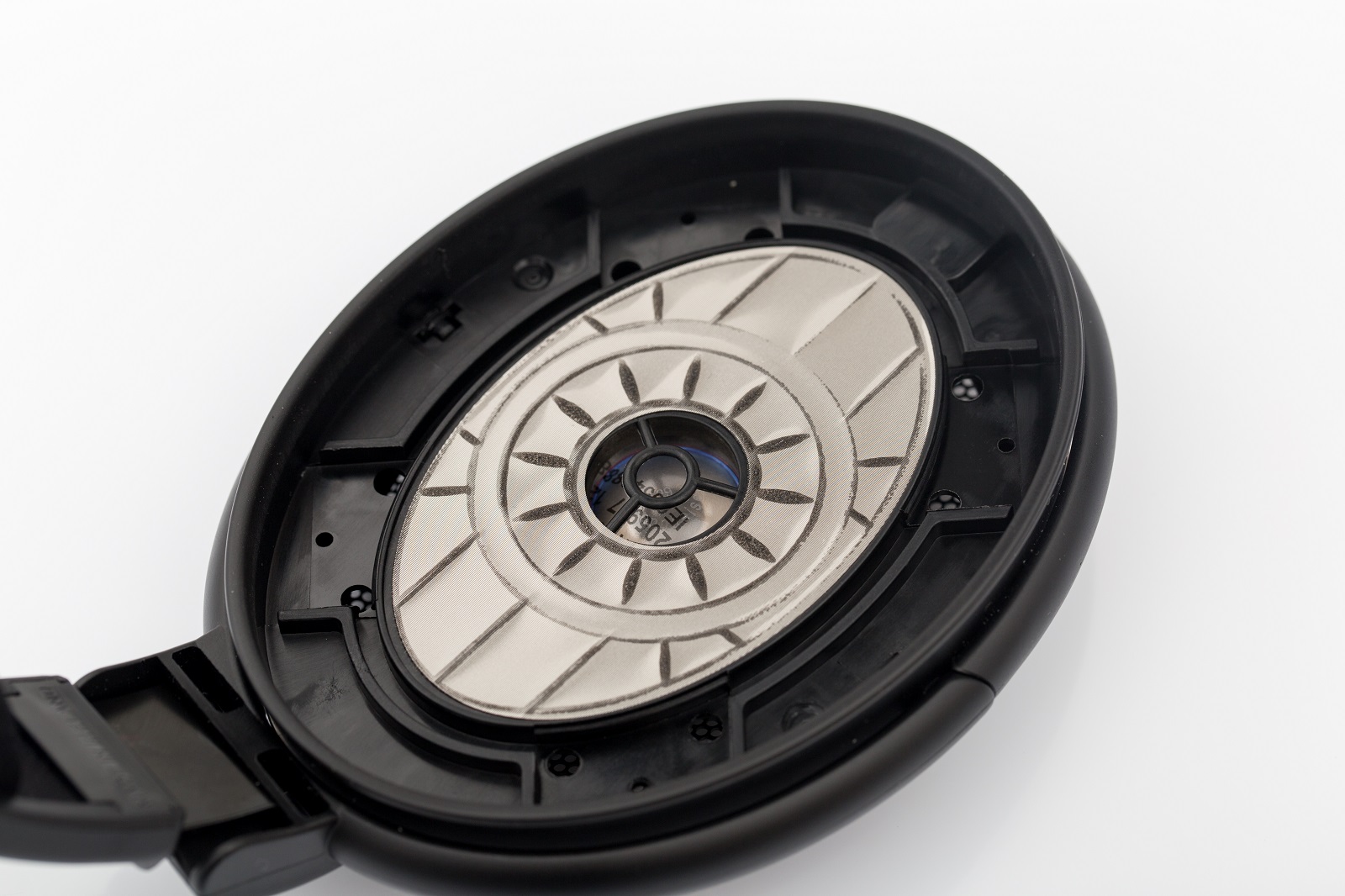 HD 660S Driver
HD 660S Driver
What is truly new is the driver.
The impedance is lowered to 150 Ohm. Sennheiser are marketing these headphones as compatible with portable devices (smartphones and music players).
Honestly, I can’t imagine a way to get good dynamics or a holographic experience out of a smartphone.
Maybe the halved impedance would lead you to believe that the sensitivity is much better, but you’d be wrong. In reality the headphones are 2dB more efficient that the predecessors, so in real world tests they sound just a little bit louder.
In conclusion, I don’t recommend you to plug them directly into a smartphone, but if you add a portable amplifier to the mix, things will get radically better.
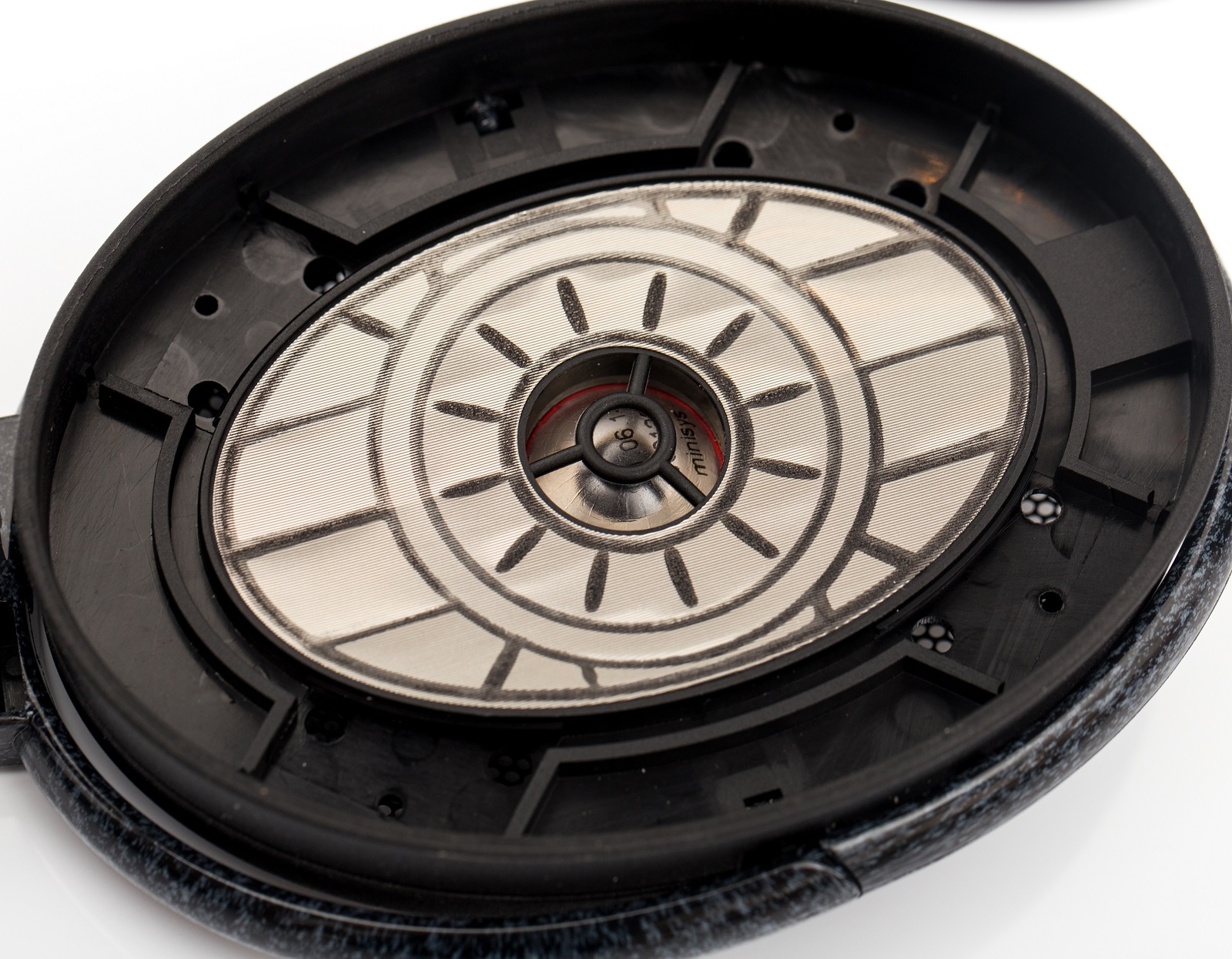 HD 600 driver
HD 600 driver
Looking through the technical specifications of the high end Sennheiser models, I see an obvious similitude to the HD 700. I even have a theory according to which Sennheiser might have had a HD 700 driver excess stock and “poof!”, the new HD 660S was born. But this is just a theory that I cannot fully prove.
I observed similarities in the dampening material behind the diaphragm and in the metal mesh behind the diaphragm. Its shape also resembles that of the HD 700.
Anyway, what is really important is that sonically HD 660S is quite different from the HD 700,
which for me is a good thing.
But now let’s get to the most interesting part.
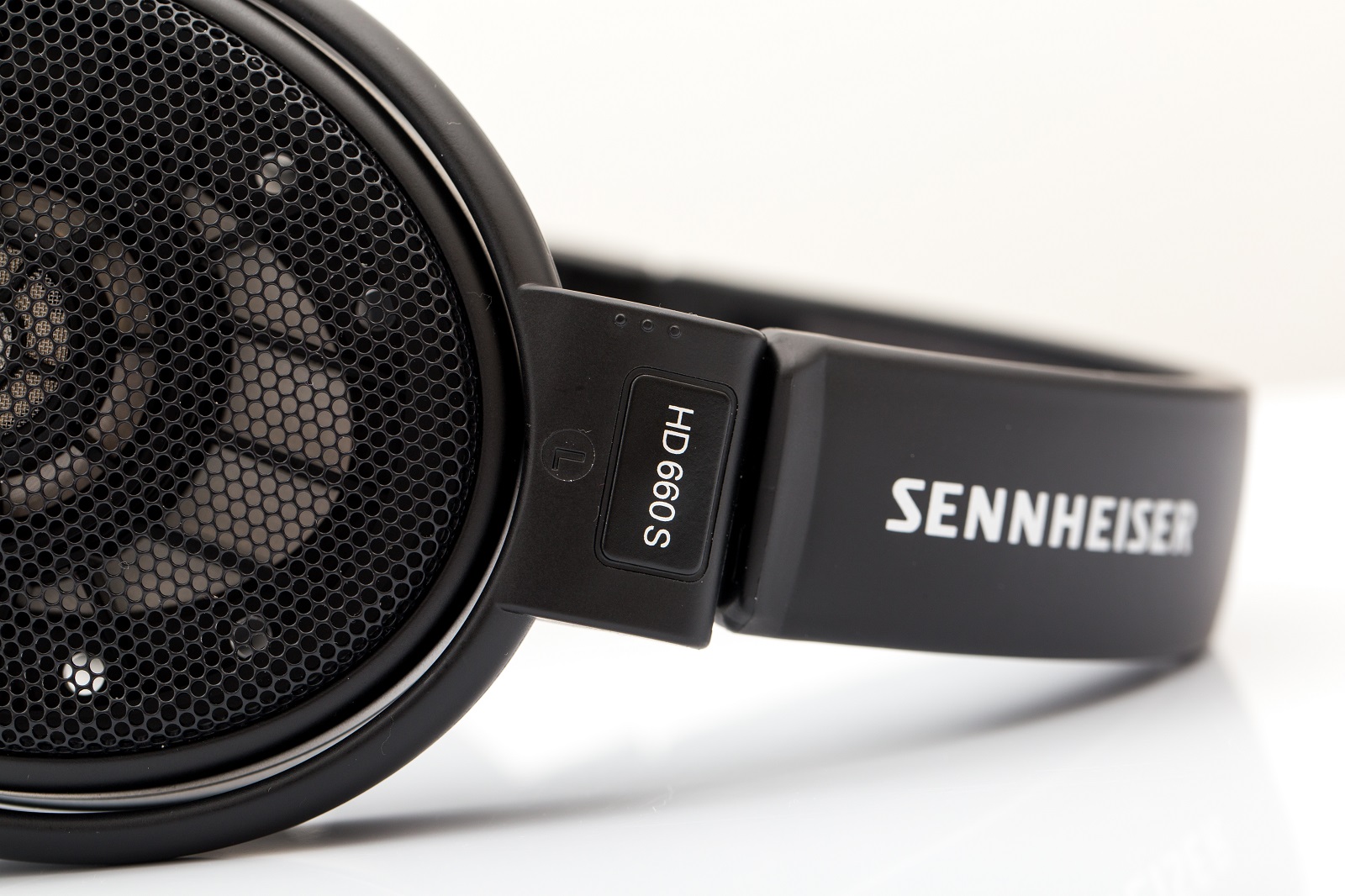 Sound quality
Sound quality
Well, every morning this week I lifted my mood with the album
Cei Ce Ne-au Dat Nume by the Romanian rock band
Phoenix.
Electrocord is not Chesky or Reference Recordings, I know, but I consider it a quality recording for 1972, from which nowadays many could learn a thing or two.
From the first notes of
Negru Voda – Baladă, even though the song becomes complex very quickly, I was impressed by the precise positioning of each acoustic instrument in a distinct place.
The electric guitar, the bass guitar, the violin and the drums seem not touching each other, they don’t compete for the same space, there isn’t a struggle for which to come forward and which to be left in the background. The headphone never sound hectic or crowded.
When changing the HD 650 with the HD 660S after a non-stop 2 hour listening to the HD 650, I can feel that the veil has lifted, the mid-bass stops rattling and clipping and the harmonic distortion feels lower.
The veil that I was talking about is much more present on the old versions of HD 650 and HD 600. The new HD 650 and HD600 versions are better in the respect. Even though the manufacturer doesn’t acknowledge any changes, the changes are there, the dampening material behind the diaphragm has been modified and the new HD 650 sound cleaner and less distorted.
This problem is no longer present on the HD 660S and this is probably one of the best improvements of the new model.
In any case, if you like a slower smoother presentation, I think you’d better keep the HD 650 because it does this better.
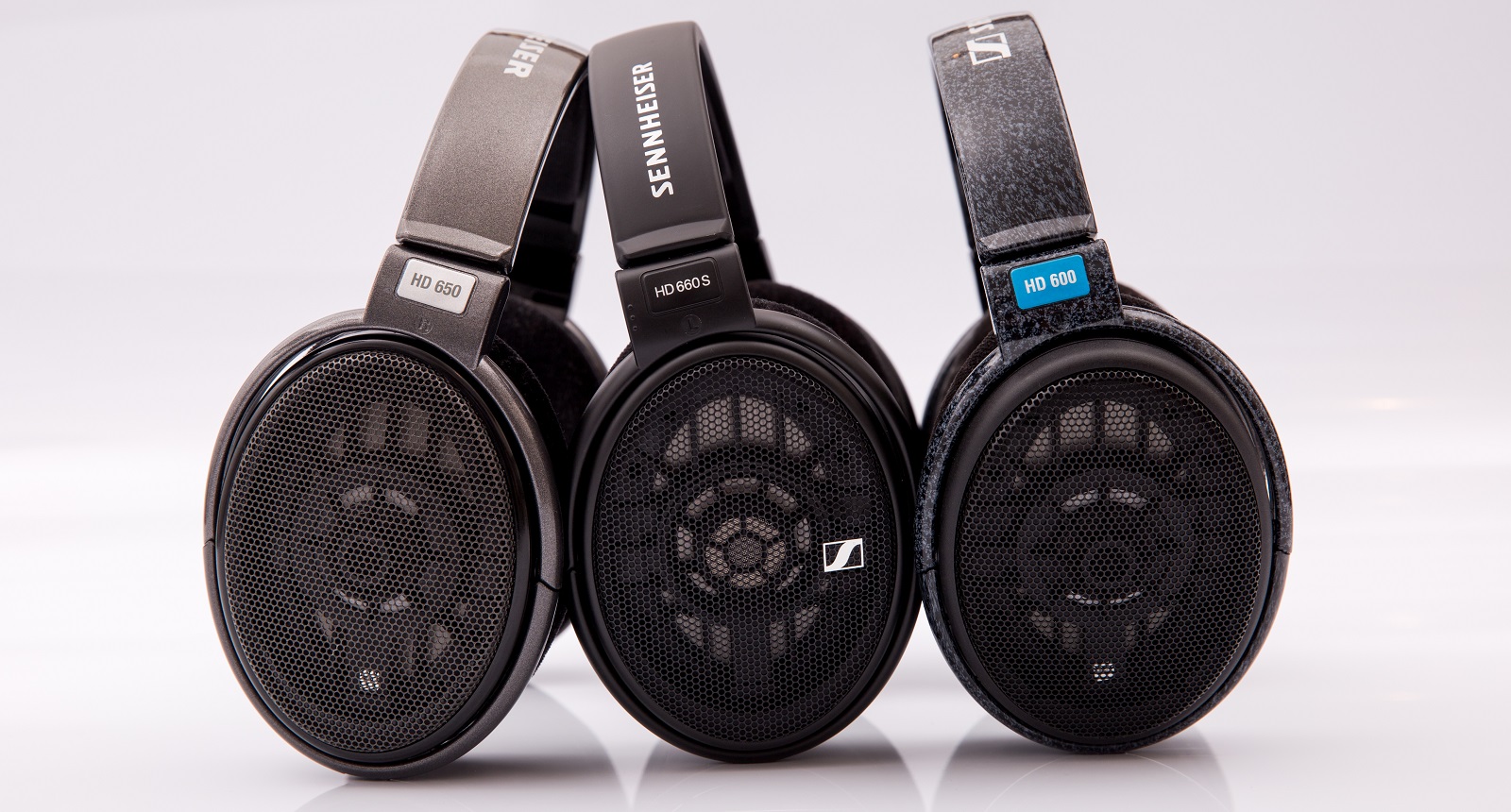
Listening to local rock music, I noticed a much lower mid-bass and voice distortion and a quicker decay of notes, everything seems quicker and instantaneous.
Despite their well known qualities, both HD 650 and HD 600 have never been praised for their quick transients. Their sound is soft and slow, lacking in speed even paired with a fast solid state amplifier.
In this regard, the HD 660S is two levels above.
Only now I can say that HD 660S has enough speed and impact that it can rival the mid-level planar magnetic headphones.
Every cause has an effect, so the quick transients unearth hidden micro-details that the HD 650 is not capable of rendering.
Yes, the HD 660S has more resolution and clarity. It still cannot touch the HD 800 in this regard, but I’m happy that things evolved to this high level for the
modest price compared to other models that we’ve reviewed.
Another positive effect is the much more precise timing.
If you carefully listen to fast electronic music on the HD 650 or HD 600, you can hear a micro-echo, like an unpleasant resonance, maybe and effect of the over-damping behind the diaphragm (again just a guess). This effect damages the delimitation of notes and each individual sound end up not being sufficiently well defined.
The HD 660 S have a more precise timing, giving the sensation that musical notes are fuller and more precise, better rounded, with a clear definition.

In the long term this could induce listening fatigue, but even so, the timing is more correct and true to reality.
Listening to the song
Strunga from the album
Mugur de Fluier, I notice the impressive soundstage that is well expanded in all directions.
I now realize that none of the models in the HD 6xx series, including HD 660 S, offers a convincingly large and expanded enough soundstage. The soundstage is somewhat compact and intimate, but surely not claustrophobic. I would categorize it as a medium-sized soundstage, not too large (like HD 800), but also not so close as to make me feel on the stage with the band.
In this respect, all 3 headphones are almost identical.
The depth of the soundstage is pretty good. With my eyes closed, I can walk myself through the quality recordings. On well recorded material I could never hear the sound becoming too crowded.
Interestingly, despite the fact that I don’t feel the notes flying a few meters from me, I can clearly hear the angle at which they are emitted, a good sign that the holography is in effect.
I want to mention that, from the 3 models, the HD 650 scaled the worst in this regard. I can feel myself distracted by the micro-echo and harmonic distortion in the bass and mid frequencies, and the slight veil over the notes also impairs the listening experience. By comparison, the HD 600 seems to bring a fresh breath of air and doesn’t have as many shortcomings.
Anyway, the superior precision of the HD 660 S is in effect, the model offers the most credible three-dimensional holography of the 3 models.
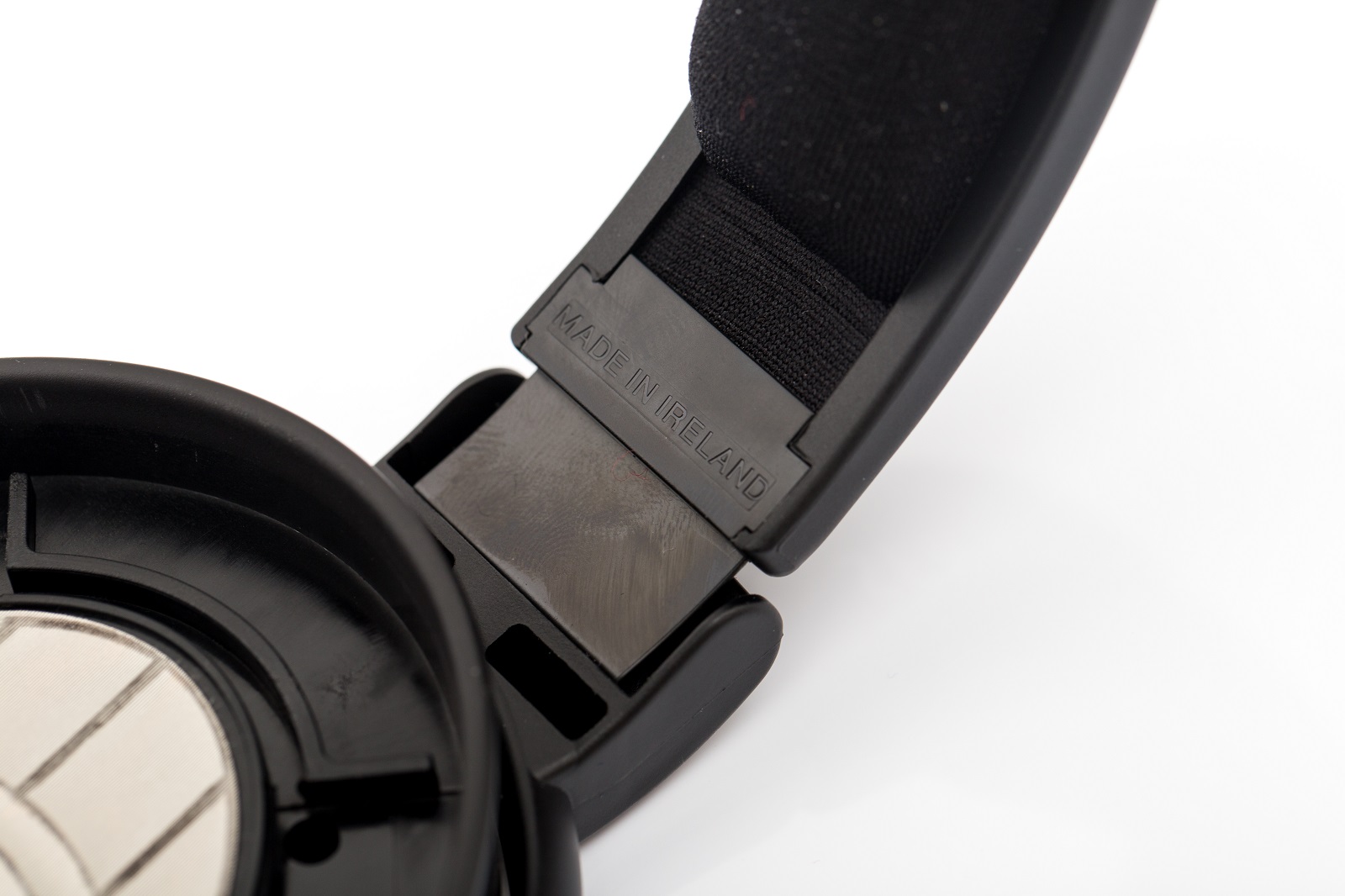 Frequency response
Frequency response
Even though the majority of the HD 650 users might say that it excels in the bass department, I am of a different opinion.
The mid-bass clearly stands out and always attracts attention on itself, continuously screaming “look a me!”.
But before we deal with the mid-bass, the lower bass is problematic, not only on the entire HD 6xx line, but also on all the open dynamic driver headphones I know.
Listening to
Infected Mushroom – Return to the Sauce I can sincerely attest that it’s an extraordinary experience!
The songs
Manipulator and
Groove Attack put any diaphragm to the test in terms of speed, impact and bass depth.
The HD 660 S vibrates well enough on bass and the mid-bass is prominent, like with it’s predecessors.
The sub-bass though sometimes leaves to be desired. The sensible use of an equalizer can solve the problem, but I don’t recommend adding more than 4-5dB in this area because the driver can start clipping and distorting when the volume is pushed above a certain point.
To make myself fully understood, the headphone doesn’t have a severe sub-bass deficiency, some people categorizing it as bass-heavy, but you cannot understand what real sub-bass is until you give a listen to some well amplified high-end planar magnetic headphones.
I sincerely think this is the biggest drawback of these headphones, maybe the only drawback that caught my attention on the HD 660 S as well as on all other dynamic driver Sennheiser models: the sub-bass starts to distort beyond 95dB of volume. I think this problem is not even present for an untrained ear. My father still claims the HD 650 sounds crystal clear, so it depends on the listener.
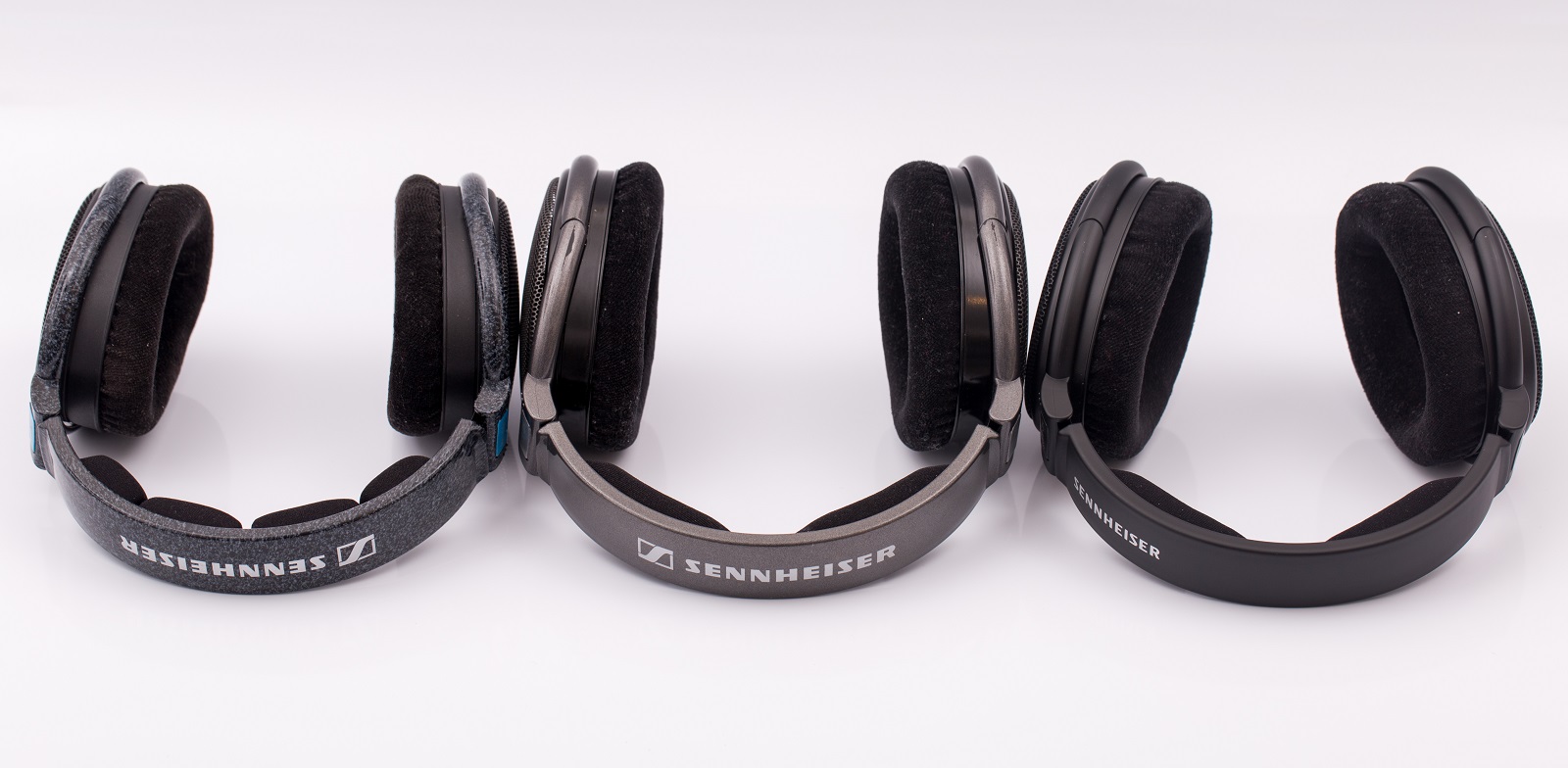
The mids, oh, the sweet Sennheiser mids.
Yes, they are still here, they haven’t left. Probably the biggest virtue of these headphones is the very present mids that seem to infuse joy directly into your central nervous system.
There aren’t many headphones in this world that gave me goose bumps when listening to violins. The headphones in the HD 6xx line have always known how to do this. I cannot explain how, but they simply excel on mids and, yes, they highlight them a bit too.
What the heck! Midrange frequencies are 90% of the sounds we hear in our everyday life, so if you cannot render them properly, everything is lost.
The HD 650 and HD 600 have always been categorized as being more musical than the other models and this has been achieved through the good reproduction of the midrange.
The HD 660 S doesn’t stray from this formula.
There is although a little difference, the mids aren’t so forward as with the HD 650. The HD 660S places them only slightly forward, it doesn’t push them that hard, so it sounds more balanced, less melancholic and musical. It’s not a big difference, but is noticeable.
If you like the overly seductive character of the HD 650, maybe you should stick to it, but if you desire a more sincere sound, the HD 660 S does it much better. It doesn’t try to hide anything but also it doesn’t overemphasize anything.
In my opinion, the HD 660 S is the true reference in the HD 6xx line, with the HD 600 coming second and the HD 650 coming last, with a more colored sound.
When it comes to sound density, all 3 models are effortless. The sensation of a meaty sound, full of substance and density is best present on the HD 650 and HD 660 S.
Another cause and effect: the dryness of sound is never present. I detest dry artificial sound and luckily the HD 660 S doesn’t have this symptom.
Listening to
Pink Martini and
Lorena McKennit it becomes crystal clear that this kind of music was created for the HD 660 S. The warm voice simply touches your soul and the instruments become a game of the imagination.
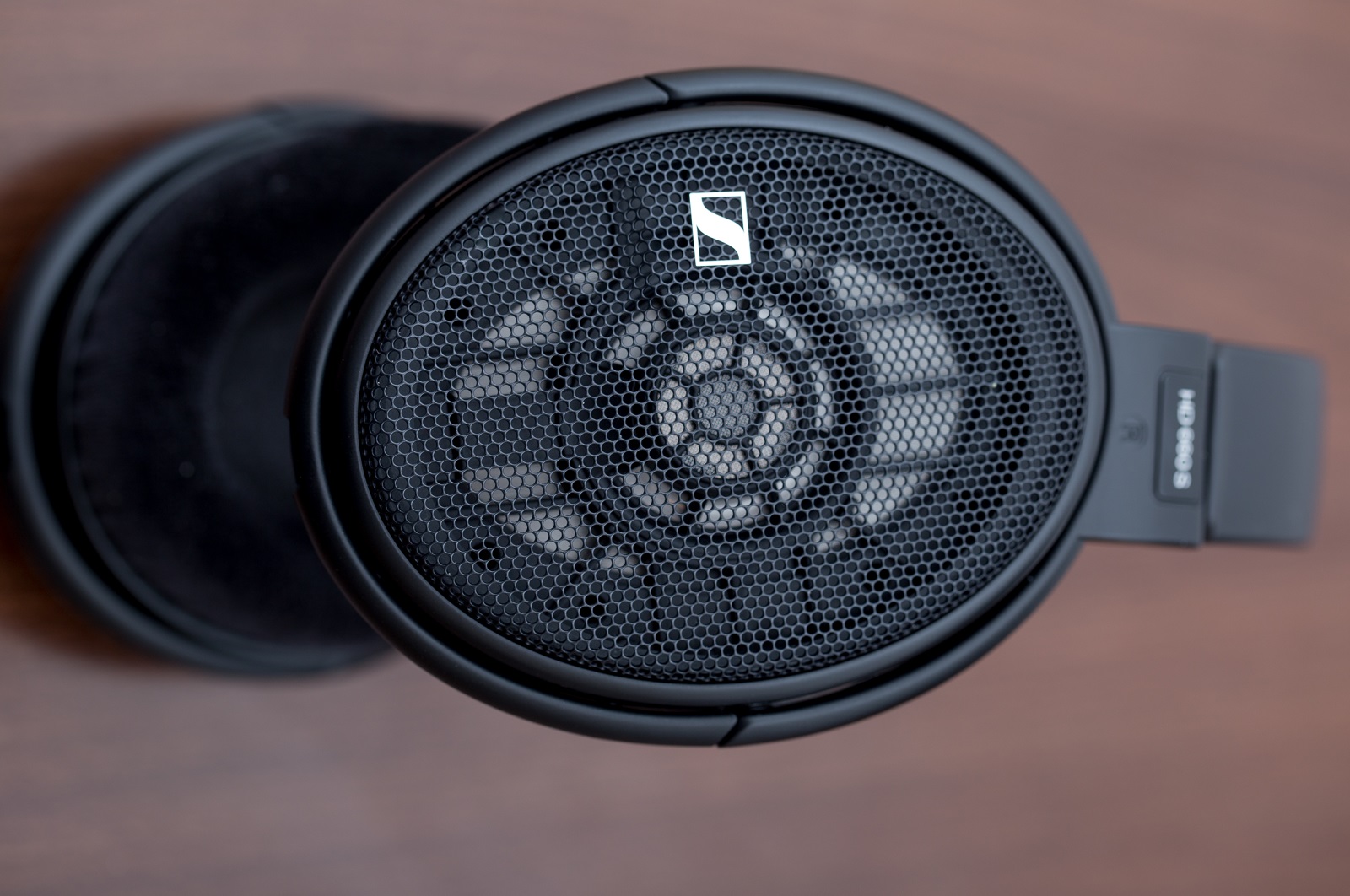
If you listen to acoustic music, jazz or classical, the HD 660 S becomes an obvious recommendation.
The high frequencies are differently rendered on each of the 3 models.
I think that the HD 660 S handles them the best, followed by the HD 600, with the HD 650 being the last in this respect.
It’s easy to confuse clear and well defined highs with sibilant highs – one of the biggest mistakes that I see coming from some online publications. Some consider the HD 660 S to be sibilant but I tend to differ completely, I consider it having clean highs, without highlighted extremities.
The highs presented themselves clean and airy, with a good balance between technical show-off and naturalness. The highs are somewhere in the middle, not overly natural, but also not overly bright and sibilant.
The HD 600 has less airy and less detailed highs than the HD 660 S, and the HD 650 has the most washed out highs of the 3 models, sometimes the high registers being placed in the background.
As a whole, the frequency response appear to be the most correct and complete on the HD 660 S. Yes, they’re a little more neutral from the midrange upward, but they never sound boring for their price category.
Talking about the price, the HD 660s being a new model, at the beginning of the life cycle, 500 EUR seems to be a reasonable price for what they are. The HD 650 had the same release price. At the moment the HD 650 can be bought for much less than the official original price, but let’s not forget that they’re 14 years old, it’s just normal to be much cheaper now.
If you already have the HD 650 or the HD 600, it’s hard for me to recommend something that is a bit better. You have to give them a listen and decide for yourselves.
If you don’t have any of the HD 6xx series models, then HD 660 S becomes a much easier recommendation. If you want the best model of the HD 6xx line, the HD 660 S is that model. If you’re on a tight budget and you want the best for your buck, then the HD 650 and HD 600 come on top as the best recommendation.
 Amplification
Amplification
Like I told you, the HD 660 S is only 2dB more sensitive than the HD 650 and HD 600, so the halved impedance has very little impact on this.
Maybe Sennheiser would suggest that you can drive this headphone directly out of a smartphone, but I consider it an April’s Fools Day joke. This headphone need the cleanest possible amplification and, of course, a dedicated one. I’ve managed excellent results with an Audio GD Master 9, and also with a HeadAmp Pico Power, and even with the ordinary Pico. The headphone simply comes alive, the dynamics raises your pulse, it’s a completely different story with dedicated amplification.
Out of curiosity, I connected them to a dedicated mid-range DAP, FiiO X3 MKIII, on the single ended 3.5mm and it sounded more than decent. The headphone came alive even on the little X3. The high-end players would surely deliver even more performance.
The myth of amplifying the HD 660 S with a smartphone is now busted!
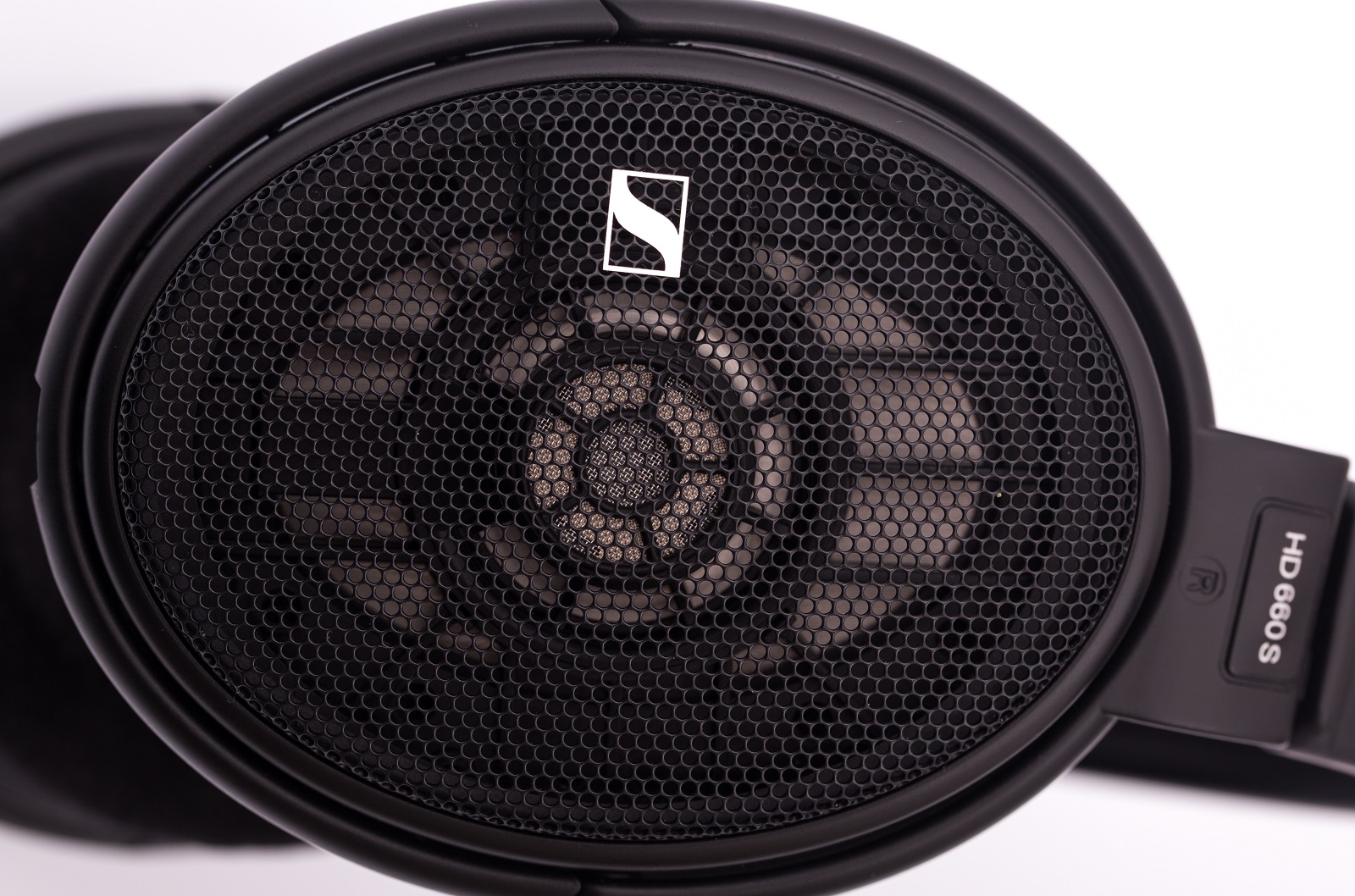
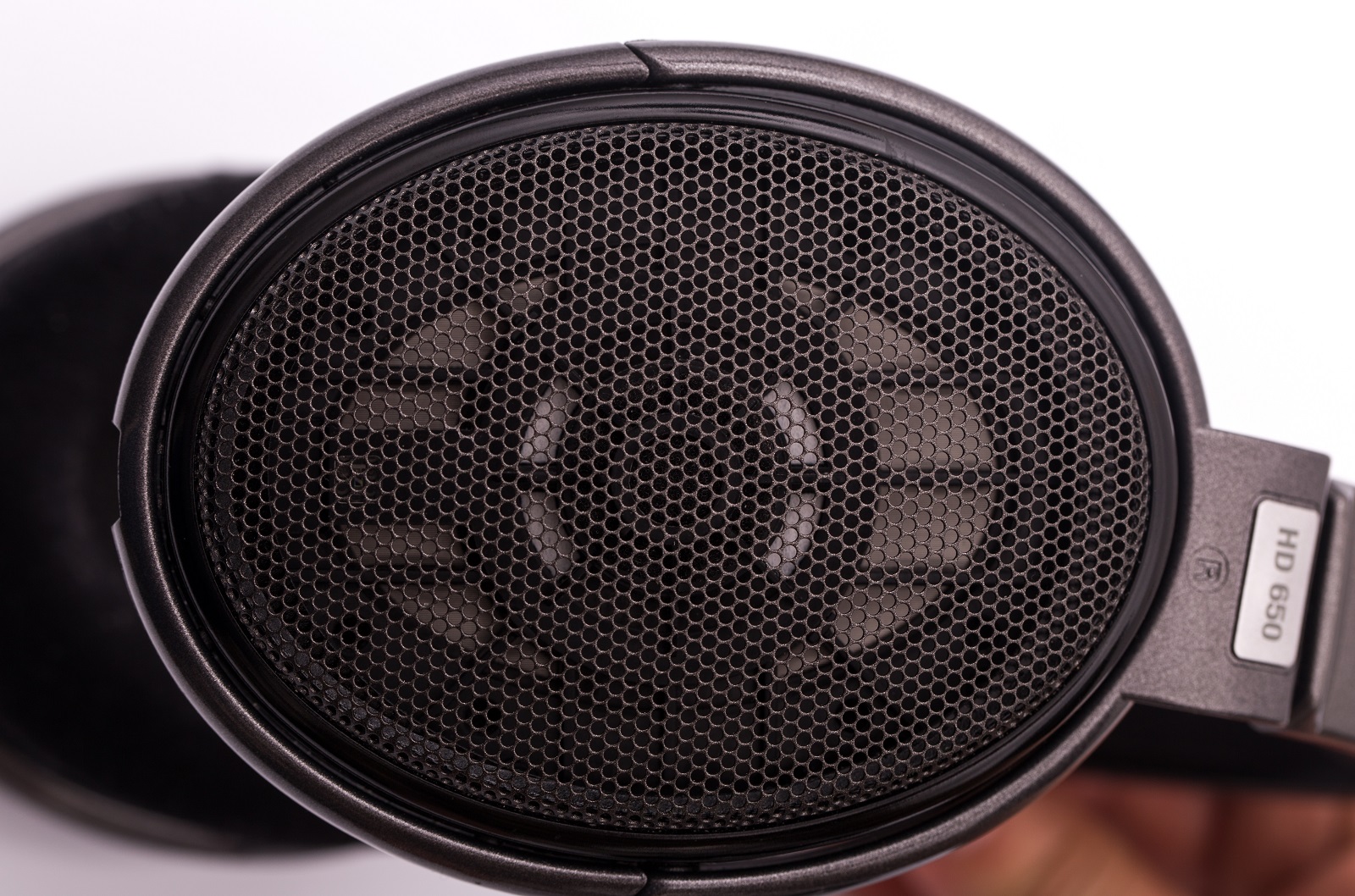 Comparisons
VS HD 650
Comparisons
VS HD 650
The HD 650 loses the tonal balance quickly, overemphasizing the mid-bass and cutting out the high treble. The overly forward mids crowd the soundstage a little bit, the sound becomes a bit claustrophobic, especially on bad mastered music. The HD 650 sounds a bit slower and veiled, the definition of musical notes is less outlined and a micro-echo comes to the mix, together with a bothering distortion.
All of these disadvantages aren’t present on the HD 660 S.
VS HD 600
It’s funny that even if, from my understanding, the HD 660 S is meant to replace the HD 650, the HD 660 S resembles the HD 600 more than the HD 650.
The highs are similar on both models, with the HD 660 S winning in the very high registers, where you can still hear new details out of the background.
The mids again are very similar, with the HD 660 S being a bit cleaner and better defined. I can hear the string vibration and the decay of the vibration more clearly, the HD 600 masking these subtle details.
The bass is a different story. The HD 600 has a weaker bass and the HD 660 S has a deeper and faster bass. The bass is the only area where the harmonic distortion can become a problem, especially if you tweak the EQ too much. The HD 660 S scales much better in this regard, offering a lowered harmonic distortion in this area.
 Conclusion
Conclusion
If you liked the HD 650 and the HD 600, it’s impossible not to like the new HD 660 S.
I’ve seen opinions according to which the HD 660 S is inferior to the HD 650 model, but I couldn’t figure out what they are based on.
Maybe if you like a more lazy, relaxed and less dynamic sound with less detail, then yes, the HD 650 can bring exactly this to the table.
The built quality is already well known for 26 years. The matte black color is welcome, as well as the 2 cables in the box. I hope other manufacturers will adopt the new Pentaconn 4.4mm balanced jack. I think this is the future of balanced connection; we’ll live and see.
The official price seems correct, exactly the price of the HD 650 14 years ago. If we factor in for inflation, they can be considered cheap for the current year.
In my opinion,
the legend continues with HD 660 S, being a fierce contender in its price category.
Equipment used for review:
Sennheiser HD660S, HD650, HD600, Matrix Audio X-Sabre Pro, iFi iPurifier2, Audio-GD Master 9, Audeze LCD-4, FiiO X3 MKIII, HeadAmp Pico & Pico Power
Original review posted
Here
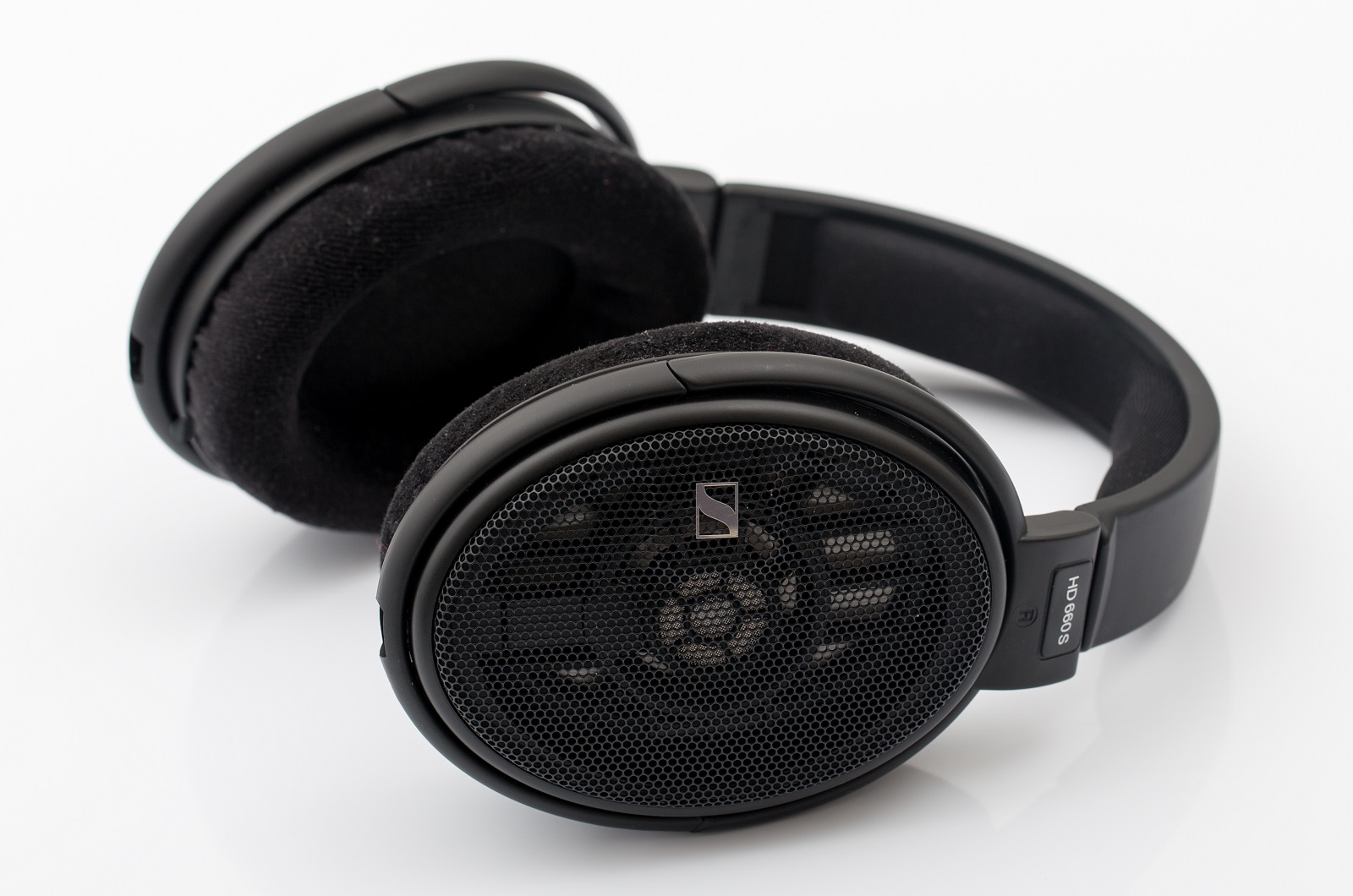




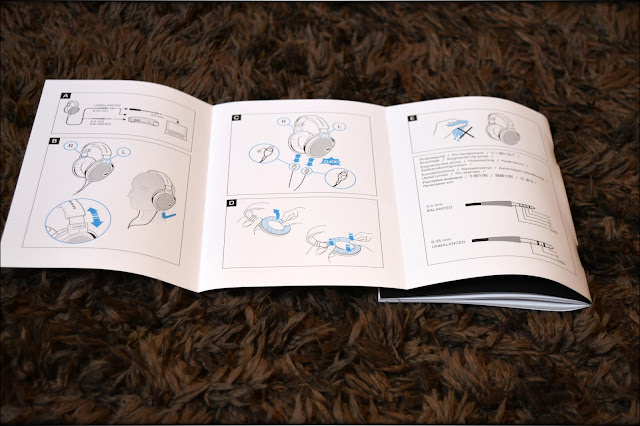






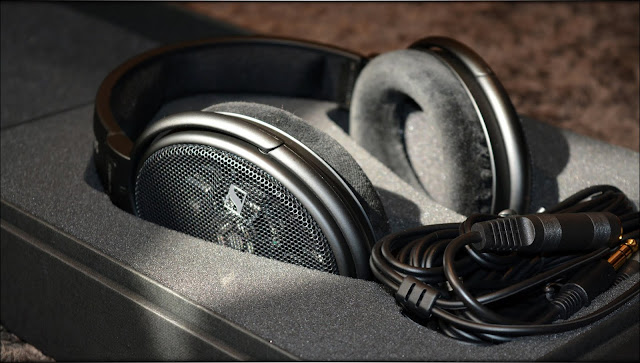


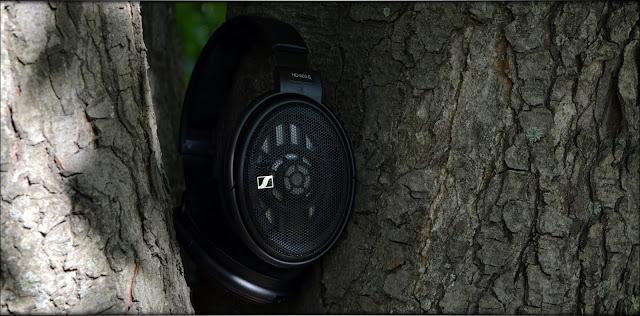

















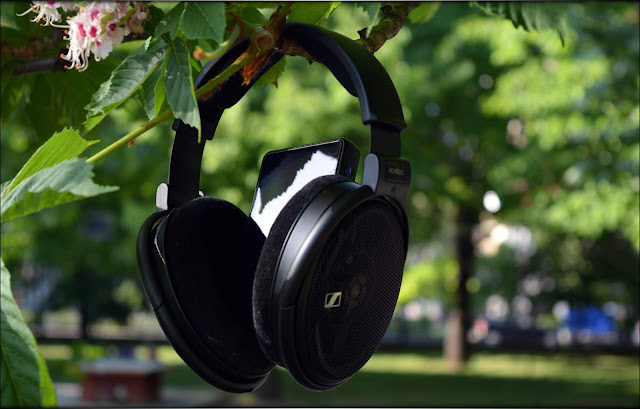
























Other than that agree 660s sound better than many 1.000 euro headphones. 6XX is a good option if u can get them at low price but to me 660s are better in every way. U have to know that Headphones doesnt work like the more u give the more u get... To some point u pay 3 times the price for 5% more.
If i understand correct u want bass and energy closed back... Get the pioneer HDj series or V moda series search something from those line ups.